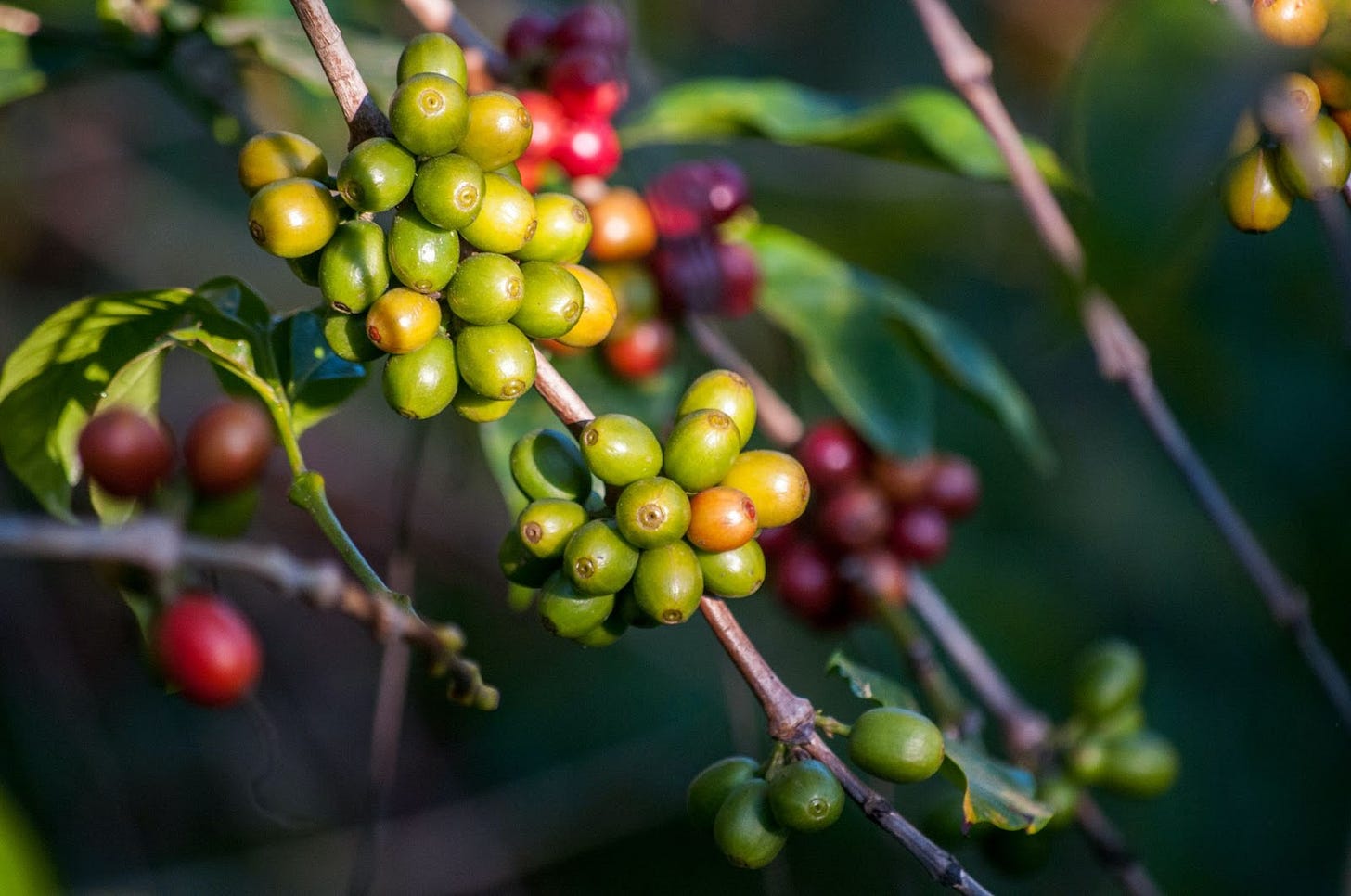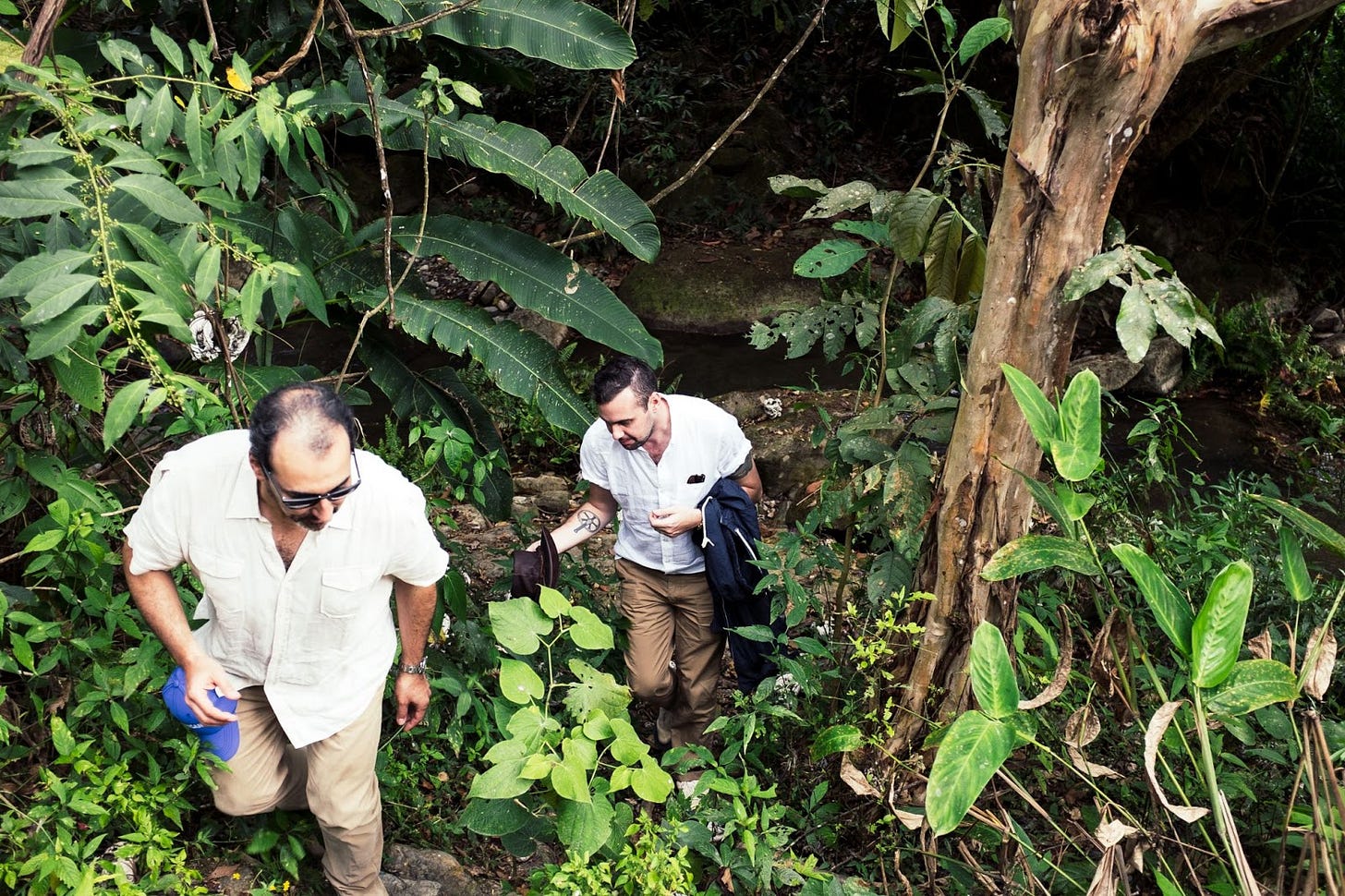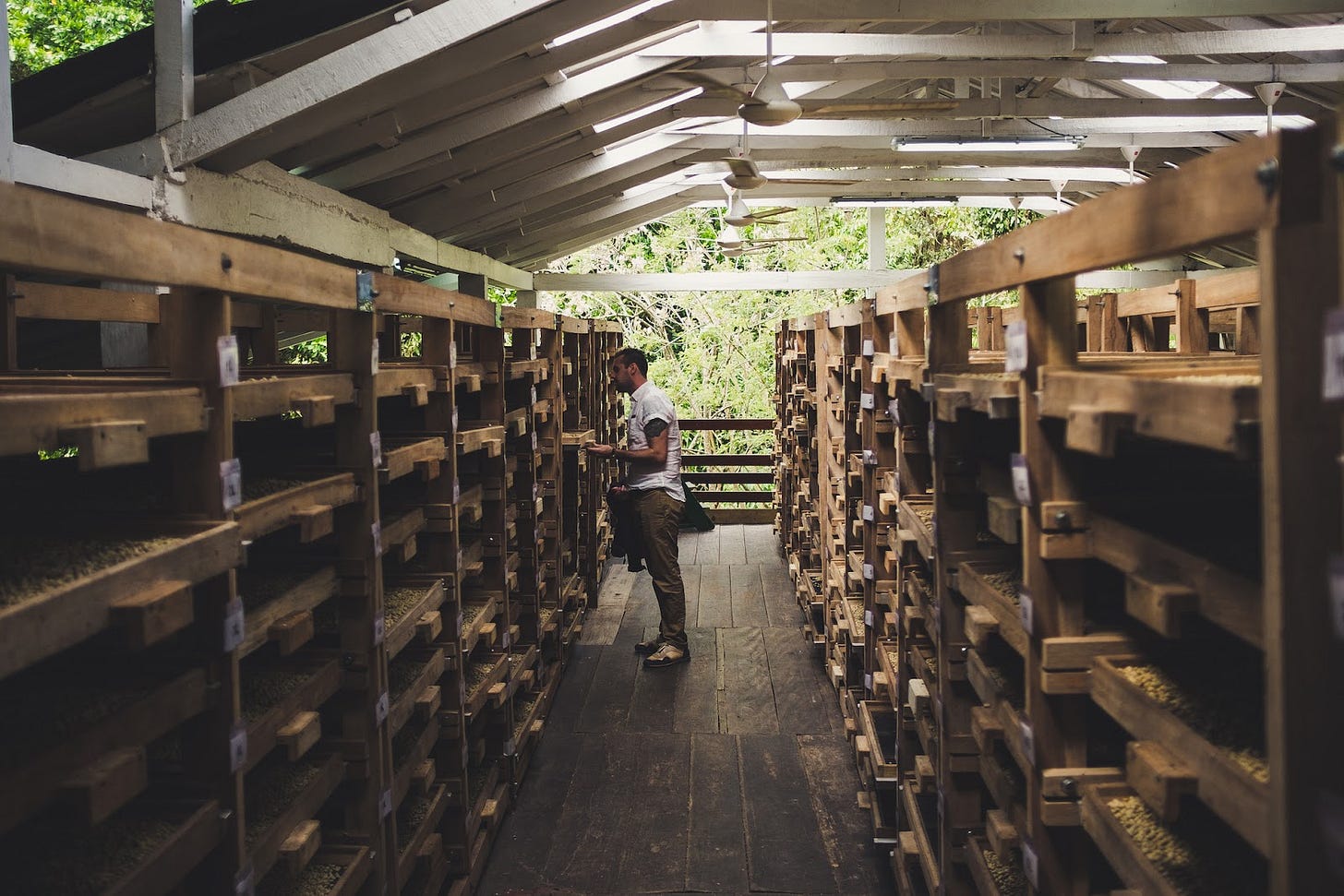Where does vodka come from?
New, ambitious and sustainable spirit makers are showing the big brands how to create carbon-positive drinks
Simple climate action // I S S U E # 3 7 // B O O Z E
In early May growing up, my father would pack my brothers and me into his black Suburban and we’d drive south. The deep pine forest bordering Lake Superior would give way to the bluffs and rolling hills of southern Minnesota, and that meant we were going treasure hunting.
For a few weeks each year, the weather conditions become just right for a delicacy — morel mushrooms — to spring up. Morels are tender and savory, requiring only a skillet and a little butter to make them a crispy, flavorful delight. Difficult to find and nearly impossible to grow, they’re not something you’ll find on a store shelf. That’s what makes them so valuable. While there’s no guarantee of finding any, there are some places they’re more likely to turn up than others. Trekking in the woods, we learned to keep an eye out for decaying logs and to check around the base of certain trees, especially elm.
On the Great Plains, farmers will plant lines of elm between fields of crops to serve as a windbreaker to prevent soil erosion. Many of these lines of elm were on private property, so we could only imagine the treasures lying underneath them.

Around them, rows and rows of bright green, tender baby corn stalks filled the fields. They would eventually grow to eight or ten feet tall. As it turns out, those forbidden trees didn’t stand a chance of fulfilling their intended purpose, either. Windbreakers or not, repeated harvests of corn have been found to strip the soil of nutrients. As of this year, more than one-third of the Midwest’s corn belt has lost its carbon and mineral-rich topsoil, according to research done by the University of Massachusetts Amherst.
In the United States, some 40% of all corn is distilled into ethanol. Much of this ethanol is used as fuel, but a significant portion is bottled and sold as spirits, from bourbon to vodka. Yet as we learned last week, the recipe for alcohol is simple: all it takes is a little water, sugar, and yeast. Increasingly, new spirit makers are rethinking that formula, and lightening the load on our already strained environment in the process.
Rather than plant lines of trees, for example, what if we reduced the amount of resource-intensive crops grown altogether? What if we reimagined the raw ingredients? This week’s profile, Good Liquorworks founder Mark Byrne, explains.
By Cadence Bambenek
Raw ingredients to feel good about
Mark Byrne founded Good Liquorworks with Tristan Willey in 2015. Their concept was simple: to produce high-quality liquor from agricultural waste. Rather than distilling from corn, wheat, or potatoes, Good Vodka — their first release — is made from fermented coffee fruit pulp, a byproduct of coffee production. He explains the huge opportunity there is for more sustainable liquor, but how hard it is to force entrenched industrialized agriculture to change.
As told to Cadence Bambenek. Edited for clarity and brevity
The single biggest thing spirit makers could do to reduce their carbon footprint would be to swap out their raw materials for byproducts.
That means distilling alcohol from byproducts of other agricultural processes, rather than creating more emissions by growing new crops.
Good Vodka has a positive carbon footprint, which is -15.76 kg of CO2-equivalent emissions. That’s like offsetting 38 bottles of Titos, a popular corn-based vodka distilled in Texas. The reason for it is almost exclusively because we’re using the fruit waste byproduct from coffee production. We of course use a glass partially made from recycled material, but what we put in the bottle matters more than what the bottle is made of.
For comparison, the carbon footprint of the average American-produced corn vodka is going to be around 0.4 kg of CO2 emissions, and that includes the crop, the bottle, the cap, and the capsule to seal the cap on.
All those things add up, and brands sell hundreds of millions of bottles. The spirit industry relies on mass production and expects high profit margins. So much of the spirits and brewing industries are built on conglomeration and the pricing efficiencies that come with scale.
This is why there’s so much stagnation in the industry — because the system produces really cheap alcohol for them.
The reason so many products come from corn is we have this giant, industrialized corn ethanol manufacturing industry in the US. Huge factory farms produce the corn that is sold by the silo-full to big ethanol manufacturing plants, and they produce ethanol for pennies on the dollar.
That corn-based spirit can be bought in bulk for about 50 to 70 cents per bottle. And that’s going to be the entire alcohol cost for a brand. The biggest cost for them is the glass bottle and the excise tax paid to the government. The smallest cost will probably be the corn inside.

I’m skeptical of carbon offsets because it’s a way of buying a license to continue doing things that are bad for the environment.
When a company brags about a carbon offset, it means that they were willing to basically pay the fine as part of their marketing costs. There are clear, concrete ways that they could be choosing something better.
There are so many fascinating ways to make alcohol. There’s a distillery in southern California that is using leftover bread, and that’s fascinating to me. There are several distilleries that use whey, the byproduct from milk and cheese production, and others that use imperfect fruit.
If the really big distilleries put their mind to it and accepted a profit margin of 50% instead of 75%, then they would be able to be sustainable at a huge scale. But they really just want to keep their profit margins. Buying offsets are attractive to them because it allows them to be really specific in how much they’re actually spending as part of their marketing campaign to prove that they’re doing better work for the environment.
We need to socially ostracize conglomerates. There are just so many more interesting spirits out there made locally by small farms, and made from interesting byproducts and fruit. The fact that 95% of the alcohol that we drink comes from a couple of square miles in a couple states just bums me out. It just seems pointless. It’s not better. And it doesn’t taste better.
Does organic mean sustainable? It’s a hard no from me.
I find it a lot more valuable to have a conversation with the farmer. There are a lot of farmers that do organic farming that simply can’t afford to get organic certification. We work with a lot of small farmers in coffee regions in Colombia. The average size of farms is about five acres, a lot of them are third or fourth generation-owned.
They treat their land well because that land is so important to them. It’s their primary asset and the output of that land is so connected to their livelihood. They don’t use pesticides, they practice regenerative farming, and a lot of the work is done by hand, but it doesn’t really pay off to get organic certification.
[Read the Hothouse feature on how regenerative farming is improving on organic]
A lot of brands are doing really interesting things right now, and it feels really good to be part of that burgeoning community.
The more that the public sees this stuff, the more that they’re going to start to expect it. They’ll know the questions to ask, and we’re arming people with the right questions. Why don’t we tell people what country this grain was harvested in, or when it was harvested? That’s all really interesting information. Alcohol is an agricultural product, so the more distanced we are from that, the worse off we are. A lot of new, smaller brands do really good work reconnecting alcohol to agriculture.
I wish that when I picked up a bottle, it said the farms where it was made, the region that it came from, and what kind of material it was made from. It would be awesome if bottles of alcohol had to disclose what distillery it was made in, because right now all it has to tell you is where it was bottled. A lot of big companies set up a satellite bottling facility that doesn’t actually distill the product, but just puts the finished product into bottles. They basically churn out nearly identical products and just stick different labels on them.
All the things we do as a sustainable brand are about telling the truth.
If you go out of your way to make a spirit that’s really interesting and actually sustainable, and you’re proud of every piece of how it was put together, you can talk about it. And that’s really, really valuable because people know and like when they’re being told the truth.
Hothouse is a weekly climate action newsletter written and edited by Mike Coren, Jemima Kiss, and Jim Giles. We rely on readers to support us, and everything we publish is free to read.












